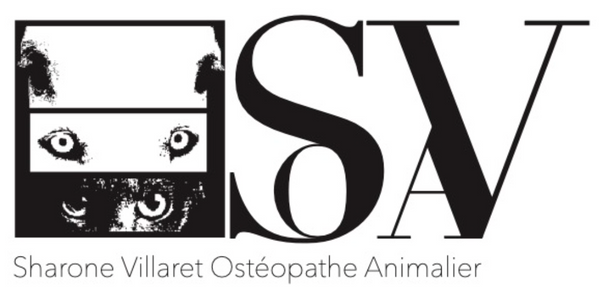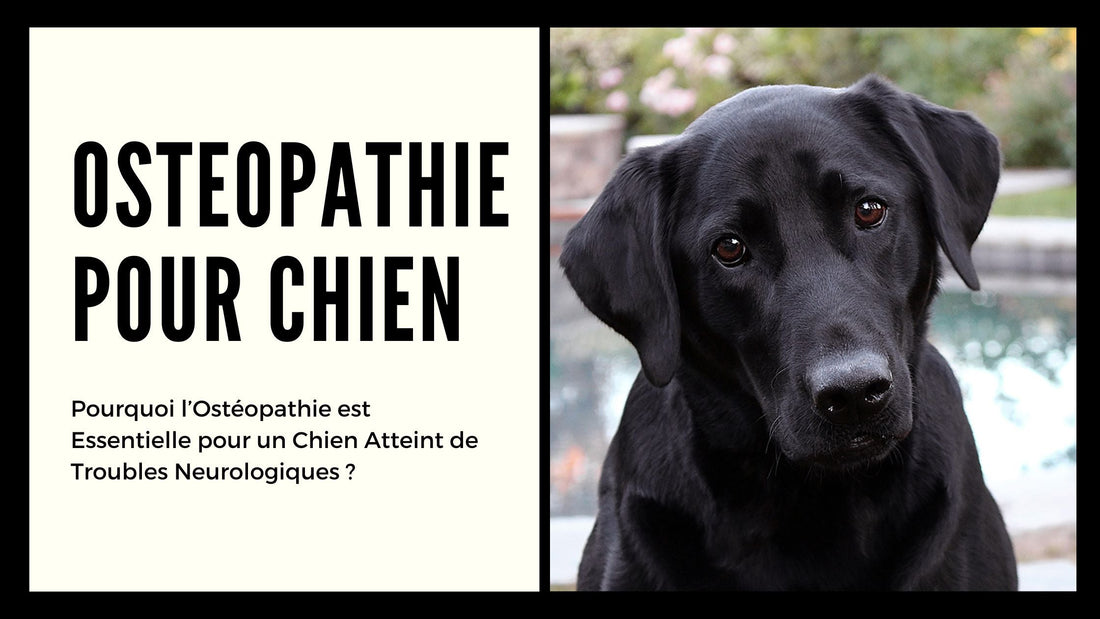Neurological disorders in dogs, whether of spinal, cerebral or peripheral origin, can lead to locomotor disorders, loss of coordination (ataxia) and sometimes total or partial paralysis . Faced with these pathologies, canine osteopathy is a gentle and complementary approach that helps restore mobility, stimulate nerve functions and improve the dog's quality of life.
In this article, we will see:
✅ The main causes of neurological disorders and paralysis in dogs
✅ The impact of these conditions on mobility and posture
✅ The role of osteopathy in relieving and supporting recovery
1. Understanding Neurological Disorders and Paralysis in Dogs
Neurological disorders can be acute (sudden) or chronic (progressive) and often affect a dog's mobility. They can be caused by damage to:
🔹 From the brain → Stroke, meningitis, encephalitis, epilepsy.
🔹 Spinal cord → Herniated disc, degenerative myelopathy, cauda equina syndrome.
🔹 Peripheral nerves → Polyneuropathies, vestibular syndrome, sciatic nerve damage.
📌 Frequent consequences on locomotion :
✔ Ataxia (loss of coordination of movements).
✔ Paresis (partial muscle weakness).
✔ Total or partial paralysis of the limbs.
✔ Secondary muscle tension due to postural compensations.
💡 Prompt and appropriate care by your veterinarian for initial examinations and accurate diagnosis is essential to understand the cause of the problem and, subsequently, optimize recovery and avoid the appearance of secondary disorders.
2. The Impact of Neurological Disorders on the Dog's Body
When nerve transmission is disrupted, it results in:
✔ An alteration of reflexes and proprioception , making movement difficult.
✔ Significant muscular compensations which cause secondary tension and pain.
✔ Muscle weakening due to lack of movement, which can lead to atrophy.
Dogs with paralysis or neurological disorders often have to change their posture and movement patterns, resulting in joint locks, muscle tension, and loss of range of motion .
💡 Osteopathy can play a key role in limiting these imbalances and supporting nerve and motor recovery.
3. The Role of Osteopathy in Helping a Dog with a Neurological Disorder
Osteopathy cannot cure neurological injury , but it helps relieve compensations, stimulate blood circulation and improve mobility .
📌 How does osteopathy work?
🔹 Releases muscle and joint tension to prevent secondary blockages.
🔹 Stimulates blood and lymphatic circulation to promote nerve tissue recovery.
🔹 Works on proprioception and coordination to optimize the dog's body schema.
🔹 Promotes better postural balance by avoiding compensations that tire the body.
4. Osteopathic Techniques Adapted to Neurological Disorders
The animal osteopath adapts his techniques according to the severity of the neurological disorder and the general condition of the dog .
🐾 Techniques used:
✔ Work on the spine (vertebral column): Relieves tension on the spinal cord and improves the mobility of the vertebrae.
✔ Gentle mobilization of the limbs: Prevents muscle atrophy and stimulates proprioception.
✔ Myofascial techniques: Acts on the fascia to release tension and improve vascularization of the affected areas.
✔ Gentle nerve stimulation: Promotes reconnection between the brain, spinal cord and muscles.
📍 Areas often worked on in osteopathy on a dog suffering from neurological disorders:
🔹 Cervical (C1-C7) → Important for balance and coordination.
🔹 Dorsal and lumbar (D1 to L7) → Essential for tone and posture.
🔹 Sacrum and pelvis → Promote better locomotion and limit tension on the hindquarters.
💡 Regular osteopathic monitoring significantly improves the quality of life of a paralyzed dog or one suffering from neurological disorders.
5. Osteopathy and Functional Rehabilitation: A Winning Duo
To optimize the recovery of dogs suffering from neurological disorders, osteopathy is often associated with:
✅ Physiotherapy sessions (massages, exercises, hydrotherapy) to strengthen muscles.
✅ Proprioception exercises to help the dog regain good coordination.
✅ Good management of bedding and comfort to avoid bedsores and stiffness.
✅ Regular veterinary monitoring to monitor progress and adapt care.
💡 Comprehensive care (osteopathy + physiotherapy + veterinary care) offers the best chances of recovery and comfort for the dog.
6. Testimony and Practical Case: A Paralyzed Dog Who Recovers with Osteopathy
🐶 Example of a dog with a herniated disc resulting in paralysis of the hind legs
Lucky, a 7-year-old French Bulldog, was diagnosed with a severe lumbar disc herniation (L3-L4) that resulted in hindlimb paresis (muscle weakness with partial loss of movement). After surgery to decompress the spinal cord, Lucky still couldn't walk normally and dragged his hind legs.
📌 Osteopathic care
➡️ Session 1 :
🔹 Work on lumbar spine mobility to avoid compensations and free up nerve circulation.
🔹 Myofascial techniques to release muscle tension in the pelvis and lower back.
🔹 Gentle proprioceptive stimulation to help Lucky better perceive his hindquarters.
➡️ Session 2 (15 days later) :
🔹 Noticeable improvement: Lucky is starting to sit up and is trying to move with assistance .
🔹 Work on the sacrum and pelvis to help stabilize the hindquarters.
🔹 Passive exercises to maintain muscle tone and prevent atrophy.
➡️ Session 3 (1 month later) :
🔹 Lucky manages to move on his own , even if his gait remains hesitant.
🔹 Work on the shoulders and cervical spine to avoid compensations of the forelegs.
🔹 Stimulation of reflexes to improve motor control.
💡 Thanks to regular osteopathic monitoring combined with rehabilitation exercises, Lucky was able to regain functional mobility and a good quality of life.
7. Conclusion: Why is Osteopathy Essential for a Dog with Neurological Disorders?
📌 Osteopathy does not cure nerve damage , but it helps to:
✅ Optimize functional recovery by stimulating nerve transmission.
✅ Limit pain and compensations linked to postural disorders.
✅ Improve proprioception and coordination to avoid falls and blockages.
✅ Prevent muscle atrophy by maintaining good joint mobility.
📍 Osteopathy is an essential complementary approach to integrate into the care of a dog suffering from neurological disorders or paralysis.
💡 Regular monitoring, combined with appropriate rehabilitation, helps improve the dog's comfort and quality of life, giving it a better chance of recovery. 🐶💙
Click here to book an appointment with an osteopath for your dog in Portugal!

